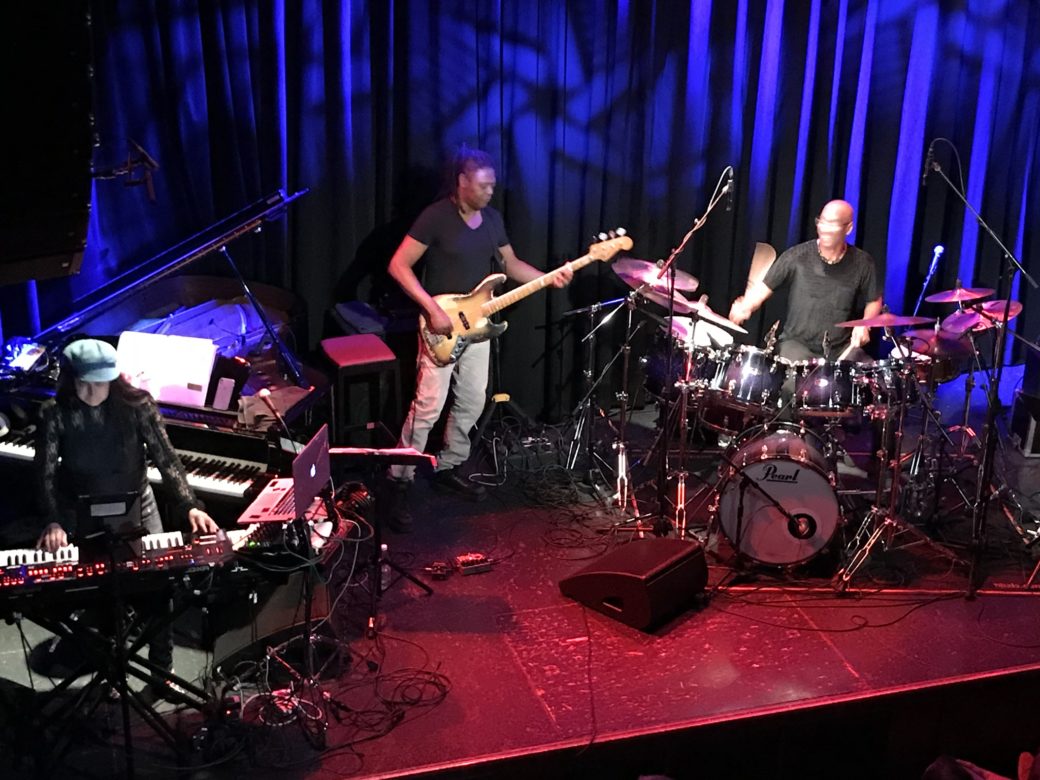Allegro
A marriage of true minds
Listening to Rachel Z and Omar Hakim
Volume 119, No. 7July, 2019
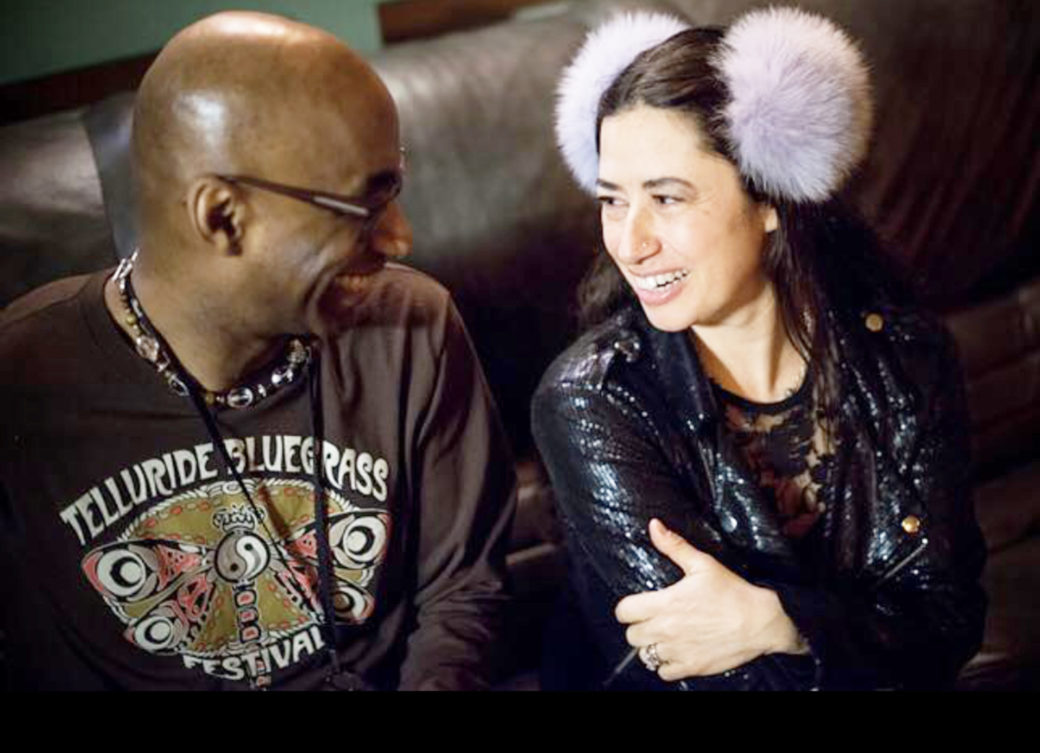
(photo by Robert Meyer Photography)
They met on the club scene years ago. They recorded together sporadically over the years and occasionally shared the same bandstand. But they likely never imagined they’d end up together – and yet ten years into their relationship, Rachel Z and Omar Hakim are one of the music world’s most dynamic duos. Whether playing or recording together or separately, teaching at the highest level, or advocating for their fellow musicians, these two are one of the brightest, most innovative and most positive couples in music today
Rachel Carmel Nicolazzo, once known professionally as Rachel Z, and now as Rachel Z Hakim, has distinguished herself as a jazz and rock keyboardist and pianist since the late 1980s. Rachel graduated from the New England Conservatory with a “Distinction in Performance” award while working professionally with performers like Bob Moses, Miroslav Vitous and George Garzone. While with the classic fusion band Steps Ahead from 1988 through 1996, she worked with Al Di Meola, Larry Coryell, Special EFX and Angela Bofill. Rachel then began a fruitful association with vibraphonist Mike Mainieri, who produced her Columbia Records debut “Trust the Universe” in 1993.
Her connection to jazz legend Wayne Shorter grew from that of protege to full-blown collaborator over the two years she worked on his 1995 hit comeback album “High Life.” Rachel also played acoustic piano on the album and served as music director for the tour that followed. The CD won a Grammy for best contemporary jazz album. 1996 also saw the release of her NYC Records debut “A Room of One’s Own.” Rachel later released an album on GRP, “Love is the Power,” which featured hip-hop grooves with melodic piano flourishes. She returned to acoustic music, in an all-female trio setting, with “On the Milky Way Express,” her well-received tribute to Shorter, in 2000. In the ensuing years, she has appeared and recorded as a leader and with Peter Gabriel, Wayne Escoffery, Terri Lynne Carrington, Journey, and with her husband, Omar Hakim, with their band Trio of Oz. She teaches at the New School for Jazz, under a solid 802 contract.
A first call drummer, Omar Hakim credits Mike Mainieri with giving him his first break, but he came to the public’s attention as a member of the seminal fusion band Weather Report (1982-1986), and most visibly in 1983, when he played drums on David Bowie’s most commercially successful album, “Let’s Dance,” as well as the follow-up, “Tonight,” in 1984. In the mid-1980s, Omar recorded with guitarist Mark Knopfler’s hugely successful Dire Straits project, appearing on the band’s fifth album, “Brothers in Arms.”
He was part of the band for Sting’s first solo album in 1985, “The Dream of the Blue Turtles,” and was at the forefront of the drum machine programming revolution of the 1980s and 1990s. His pop, rock, jazz and R&B credits expanded to include work with Miles Davis (“Tutu,” “Music from Siesta,” “Amandla”), David Sanborn, Roy Ayers, George Benson, Madonna and many others. A solo album appeared in 1989, “Rhythm Deep,” for which he received a Grammy nomination. A second solo CD, “The Groovesmith,” was released in 2000. Other credits include work with Kate Bush, Mariah Carey, Celine Dion and Journey. Omar’s drumbeats are featured on the 2013 Daft Punk/Pharrell Williams megahit “Get Lucky.” In 2017, Omar became the chair of the percussion department of Berklee College of Music.
I sat down with the couple this spring. They explained how they grew up in parallel worlds, with the magnetic pull of Manhattan’s live music scene eventually drawing them together. But that deeper connection took years to establish.
“I was born in New York,” said Rachel, “but my parents ‘kidnapped’ me to New Jersey when I was six. We were living in Stuyvesant Town. My dad worked in a frame shop, and he was going to the Art Students League. My mother was studying voice and was going to audition for the Metropolitan Opera, but she never did. Once I was born, I think I derailed some of their artistic plans.”
Meanwhile, Omar was growing up in Jamaica, Queens. His father was a professional jazz musician, Alphonso King, from Birmingham, Alabama. King had first come to prominence in the 1940s, as a 16-year-old trombonist in the big band of Louis Armstrong, and he later appeared with both the Duke Ellington and Count Basie orchestras. King eventually converted to Islam and changed his name to Hassan Hakim.
Omar was exposed to music at an early age. “I remember spending a lot of time with my Uncle Mel and Aunt Maggie,” he told me. “They owned a Hammond B3, a piano and a guitar. My uncle was really into collecting records, so he had an awesome stereo. Plus, there would always be my dad’s band rehearsals at our house. I started playing probably around age five. Got a drum as a holiday gift from my uncle, and fell in love with it, and then a couple of years later got a real drum, a black Ludwig snare drum that I still have to this day.”
“Queens was a hotbed of music,” he added, smiling at the memory. “I would go to my aunt’s house…and there was this one house on the corner. I’d always hear this drummer, man, playing his brains out. I was like, ‘Wow, who is that?’ So, one day, I asked my friends, I said, ‘Do you know who that is? I hear this guy every now and then.’ And they were like, ‘Oh, that’s just Lenny. Lenny White. He plays for a band called Azteca.’ This is before Return to Forever.”
Hakim remembers driving down Hollis Avenue and seeing bebop drummer extraordinaire Roy Haynes mowing his front lawn. Count Basie lived in nearby St. Alban’s Park. Omar was later taken by his parents to jazz brunches at Jamaica’s Club Ruby, where he heard the likes of Horace Silver, McCoy Tyner, Rahsaan Roland Kirk, and drummers Elvin Jones and Art Blakey. He also remembers being taken to John Coltrane’s house in the St. Alban’s neighborhood: “I have vivid memories of ringing the doorbell and John appearing there. He always seemed to have a horn around his neck when he answered the door!”
Rachel’s story of her early days is all about the opera. She told me, “I was having a happy childhood…until my mom got inspired to start going to the opera every Friday night! My mother was a trained opera singer…I thought everyone sang like that when they washed the dishes! Before that, instead of getting to play softball, which I really liked, my parents said, ‘You’re going to play piano.’ And I was like, ‘I am? Okay, cool.’ Because I did like piano. And it was a gift to be able to have a piano, and so, once I started lessons, they were strict about me not quitting.”
Rachel added, “When I was around nine, my mother explained that we would now be going to the opera every Friday. Someone had given her a subscription to the Metropolitan Opera. Three tickets in the second-row orchestra. So, once I went to a few operas, it became a strange obsession, and I would go every Friday. My cousin worked backstage. She was friends with Pavarotti, actually. She got us backstage to meet all the stars. It became a routine. We’d go see the opera. Then we’d meet the stars. I was little, so Pavarotti would pick me up. For kids, there are some operas that are better than others.. I fell in love with Mozart and Rossini, and some of the Verdi operas…you know, it gets heavier, but it’s really great. And then modern operas. So, I began to collect the scores. My dad made me an opera dollhouse and I dressed up my dolls like opera characters. My dad helped me make dresses for them, and then I would sing the operas in my room…all the solo parts. I’m an only child, so, I had a lot of free time to be a dork. ‘Die Fledermaus’ was one of my first that I learned. I still have the dollhouse and the dolls with miniature sets that my dad would copy from the Met. Years later, he designed around 80 shows for a local theatre. So, in some ways, making those initial replicas of the Met sets was a nice study for him.”
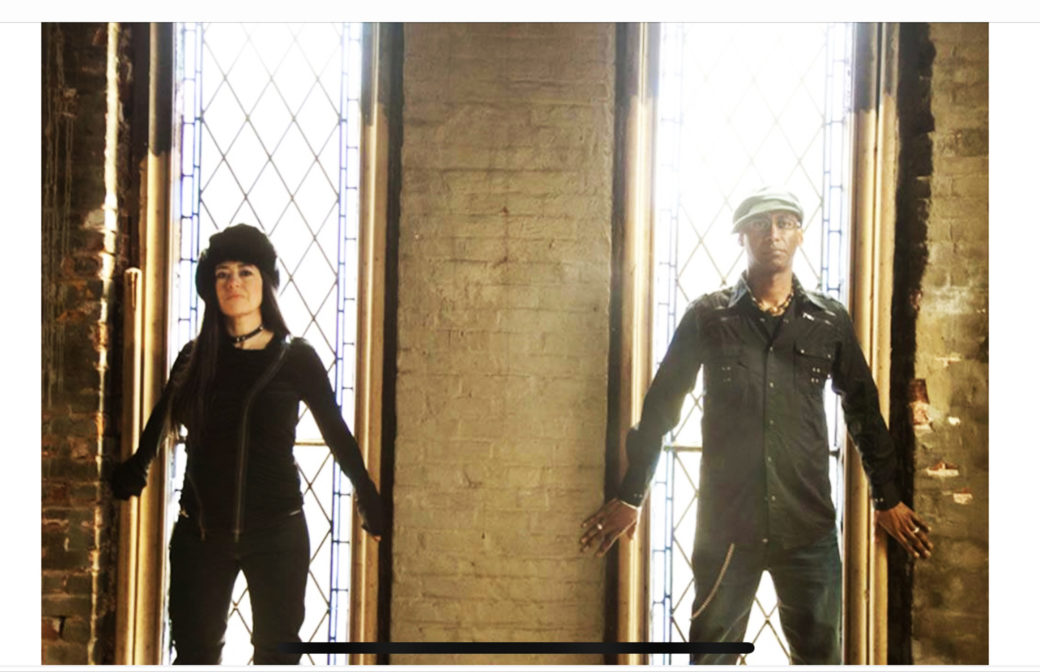
(photo by Carl Timpone)
As they reached their 20s, Rachel and Omar found they were part of the same scene, one that merged jazz, rock, fusion and R&B with electronica, groove and world music.
They both separately played with Steps Ahead – he, live in Japan with Marcus Miller and Michael Brecker, and she in a 1988 incarnation. Both artists appeared with Wayne Shorter: Omar with Weather Report, Rachel on Shorter’s 1997 “High Life” record. In 1990, she co-wrote the Grammy-winning gold record “Tokyo Blue” with the saxophonist Najee. Omar played on that record and four others with Najee. Together they worked with guitarists Jimi Tunnel and Al Di Meola – on the latter’s 1990 album “Kiss My Axe.” They also appeared separately with Angela Bofill, Peter Gabriel and Stanley Clarke.
The two had met in 1988, and Omar remembers being struck by Rachel’s presence at his gig, (“She showed up with a bunch of her girlfriends,” he told me.) They later recorded together and toured with Wayne Shorter, but they didn’t become a couple until 2009, almost 20 years after their first meeting.
We talked about influences and defining moments onstage and off. For Omar, one of the most memorable occurred at a club in Jamaica, Queens called the Village Door. Omar remembers, “The club was right across the street from the Rochdale Village co-op projects, and it was sort of the gathering place and a jam session hall for musicians in Queens. There was a brilliant drummer in the house band named Clyde Lucas, who blew my mind. Not only was he an incredible technician, but he was a master of brushes. His finesse and technique were superb. I was only 11 years old at the time and got to sit in. Clyde said to me, ‘Wow, you play really well, but you’re working too hard. I’m going to show you how to make the sticks work for you.’”
“What I got from Clyde,” said Omar, “is what formulated the basis of my playing – the relaxation, the centering, the breathing. Clyde would make everything look effortless, even the most difficult stuff. It would just be flowing from his hands, and that blew my mind, and I wanted to learn how to do that. To this day, I feel like what I learned from him saved me from conditions like carpal tunnel syndrome. Like Rachel always says, musicians are small muscle-group athletes.”
For Rachel, one defining experience was a passing, backstage comment by Wayne Shorter. She said, “When I played the ‘High Life’ tour, the guitarist David Gilmore and I were just talking to Wayne, just trying to negotiate how to free up our playing while the groove was going on. We were young, and nervous, and Wayne Shorter was ever free, and we wanted to be ever free! And we asked him, ‘How are you doing it?’ He said, ‘Well, are the bars getting in the way?’ And we were like ‘Yeah, maybe.’ And so, he just started playing the Coltrane tune ‘Giant Steps,’–but as if he were just talking to us. Of course, it was over those rather difficult, challenging chord changes, and at an ultra fast tempo. Wayne was playing what you might call flourishes, bursts of notes. And this became a guiding light. I learned that you could play incredibly sophisticated changes, but just play them like a little baby or a child trying to communicate love. And that gave me the key to tunes like ‘ESP’ or ‘Pinocchio’ and a way to communicate better – as long as my heart is connected in that way. And for me, Omar reinforces that.”
Omar has his own philosophy when it comes to finding connections and likes to continually recognize the communal aspect of performance. This is a merging of a mental and physical approach to playing the drums, but one which also involves a recognition of the actual space he happens to be in, and more important, of the other people in the room. He told me, “What I realized about performing is that it’s primarily an opportunity to share and communicate musical language with an audience. Many times, musicians get uptight and nervous and have a lot of anxiety. And what I had to learn and always remind myself of–is that music is a language, the idea being to touch people’s hearts and souls. So, if I’m doing it right, then I am going to the gig not to perform, but to participate in this communication with the audience. To find a common language. And I notice that when I arrive at the gig with this attitude, I find myself more mentally and spiritually open to whatever’s going to happen that night. I’ve removed the onus from having to perform a certain way. When people tell me, ‘Hey man, have a great gig,’ my answer sometimes will be, ‘Well, you too!’ Because we are going to this gig together. The only difference is, you’re sitting out in the audience and I’m on stage…but the experience is one that we’re actually having together. It takes the ego out of it. And you’re not accomplishing from a place of anxiety or expectation. You’re there for the musical experience, for that musical moment, and when you’re open, then you’re in that flow – naturally.”
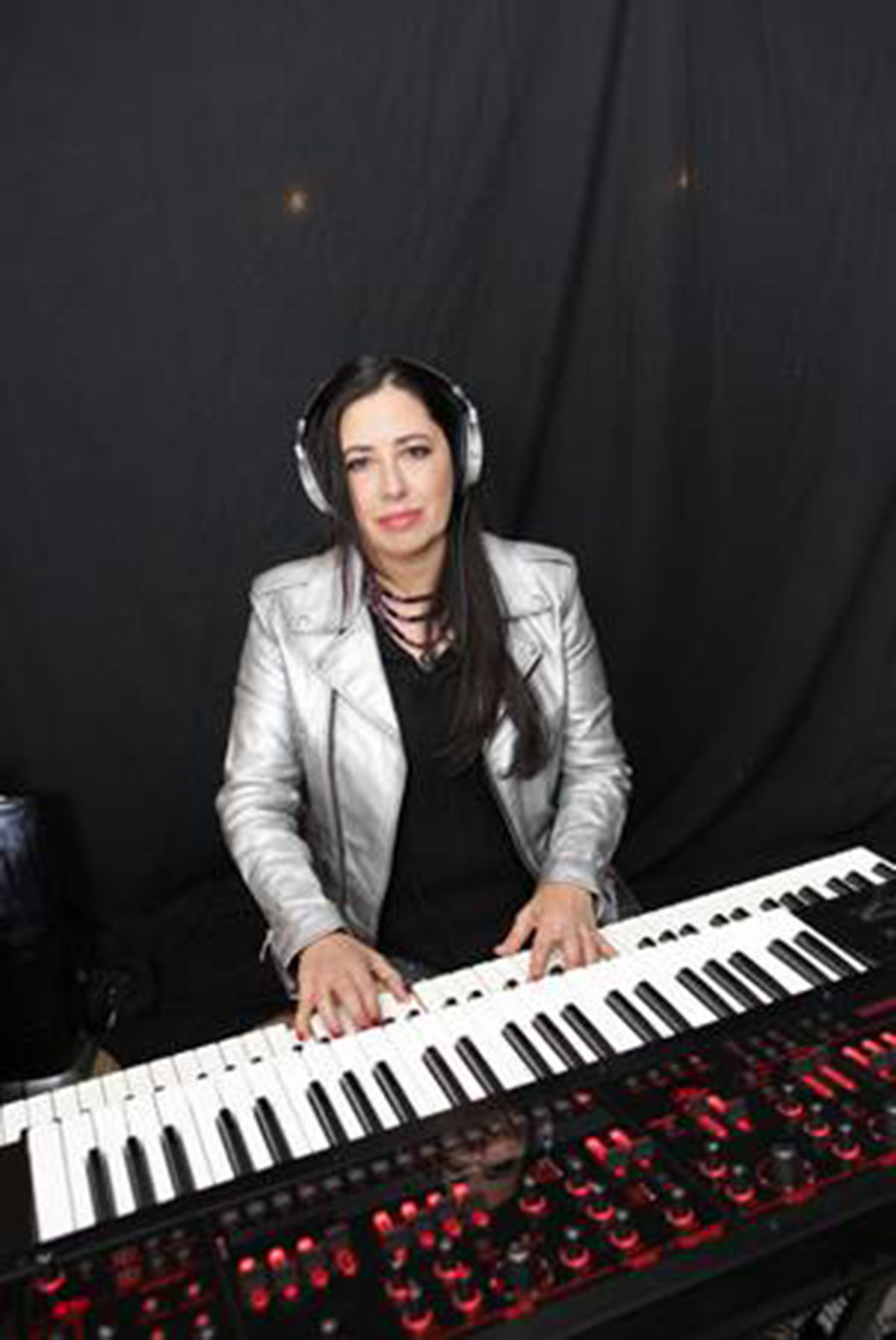
(photo by Roger Salem)
Rachel and Omar are extremely health conscious. They both know that being physically fit and agile allows them to more effectively pursue their craft. I asked Rachel what she does to warm up before a show, and, not surprisingly, her answer was very specific. “I use Richie Beirach’s five-finger exercise,” she told me, “and it’s like a warmup that gets my hands in the right position and also makes it so that I’m at the piano, I sit in the right way. I can almost do it like a yoga exercise. Because musicians need to be like trained athletes, you know? That allows me to go to a jazz festival where I haven’t played the piano before and to really relax into that piano. Every piano’s different, and some are terrible. You have to learn how to get a sound out of each and every piano. So that five finger individuation exercise really gets me focused on myself, my breathing, and the piano. It clears my mind and it creates a specific kind of relaxation. Because you might only have five minutes before you are about to play, and everybody’s freaking out, and they’re plugging in cables, and you need a minute to just get centered. It’s a physical thing and a mental thing.”
It was the physical and mental awareness, combined with virtuosity, that allowed Hakim to move fluidly across genres. “It’s an interesting journey,” said Omar, “to not only play the instrument, but then to play different styles on that instrument, because a drum set is a very different instrument in rock and roll than it is in bebop, than it is in hip hop. And that’s everything from the tuning of the drums, the size of the drums to the physical approach to the drum. And so each music makes a demand on the drummer, made as a result of a specific language. And I’ve been able to get myself comfortable playing in a lot of different styles, the first of them being jazz, of course. It’s a language. It’s almost like your friend who speaks six languages. The person who speaks the most languages always seems to be having the most fun! He goes to Paris, he’s talking French. He goes to Madrid, he’s speaking Spanish. And so, in many ways, I’ve felt multilingual as a drummer. I could play with Weather Report, play with David Bowie, play with Sting, play with Dire Straits, play with Miles…you know what I mean? I was never trying to typecast myself as a drummer. I was there more to make myself a collaborator…a ready collaborator, an able collaborator for the industry. That’s how I always see myself.”
Rachel sees herself as a pianist with an expansive, and – if necessary – orchestral approach to the keyboard. I asked her how Omar’s multiplicity of approaches to rhythm had affected her playing. “Wow, that’s a really interesting question,” she said, “because when we got together, we didn’t really intend to play together. I wasn’t marrying him to be my drummer, although that was a good idea…but you know, he’s cute! I was working on a record, and I needed different things to happen on that record. I needed someone who could come up with different grooves and make the songs sound individual. So, he happened to come by the session and I said, ‘Could you come in on the session?’ He was like, ‘Yeah, I’ll do it!’ So, he came, and it was so weird, because every tune we played, we just had this chemistry, you know? And he has his individual style and a love of all the styles. So when we were doing jazz versions of those different songs, like a jazz treatment of something like ‘Sour Girl’ by Stone Temple Pilots, it just made sense. Omar had a different groove for each song.”
At this point, Omar jumped in: “I guess it’s growing up in America at the time we grew up where it was before the time of radio being a segregated broadcast construct,” he said. “I vividly remember turning in during the late 1960s and early 1970s and hearing, on the same station, the Beatles, Rolling Stones, Temptations, Sly and The Family Stone, Jackson Five, Grand Funk Railroad, Jefferson Airplane, and Mahavishnu Orchestra – all on the same station! When you grow up like that, your mind doesn’t pre-box things. There is no box! I was influenced by all of that stuff. And then at that same time came the dawning of the fusion movement! And Herbie and Wayne and Miles and Chick starting these incredible bands. It was truly an incredible moment.”
We turned to the subject of Rachel and Omar’s collaboration, and about their respective roles in the studio.
Omar described their creative relationship as fluid. “A lot of times,” he told me, “because we both have jazz language, we have the freedom that comes from improvisational experience, right? And so, for us, you know, if there’s a tune that we love, a lot of times, we will sit down…it’s almost like, Rachel and I…it’s actually better for us to play than talk, I’ve discovered! Because, if we talk about it, maybe it won’t make sense, but if we just start playing, then I think that musical language takes over, and the musical language might be more multidimensional! Because you’re dealing with the mind and the heart and the soul. Sometimes people can interpret words and all of that in their own way. There might be many ways to verbalize a thing, but it might not necessarily be the clearest. But when you sit down to play, that’s clear. I make a statement, she responds. And then, my response or her response is clear!”
And, without missing a beat, Rachel added, “Yeah, really sometimes it’s like each of us will separately submit to one another a logic sequence or an Ableton sequence. Or, Omar, when he writes certain tunes, he comes in with the structure, and then I might react to that first idea. And one thing that’s really fun is having someone around so you don’t simply discard all your ideas. Sometimes, Omar will play a groove and I’ll be like, “Oh my God. That was so sick!” Just so original in a crazy way! And, you know, sometimes he’ll try to make it more slick sounding, and I’ll be like, “No! Go back to the original!”
Rachel is nothing if not courageous, and an abstract thinker. She’s highly creative and often comes up with ideas on the spot and grows them quickly. She cites the pianist Richie Beirach as having taught her how to have the courage to develop a theme musically. She said she also learned early that she had to speak up to be heard by other musicians, especially men. She learned to get comfortable sharing her opinions, not always easy for the only woman in the room. She told me, “There are some things that get me really excited – money is one of them (I’m a Capricorn). And also being a woman in New York City. My parents were like, ‘Rachel, we hate to tell you, but you better be rich so you can support us when we’re old!’ So, it caused me to always be devising strategies to take art and make money with it. Of course, jazz is based on inspiration, innovation, and creativity. And after all these years, I am pretty good at coming up with plans for making money, career development for myself and for others, all kinds of strategies. So, I tend to speak up!”
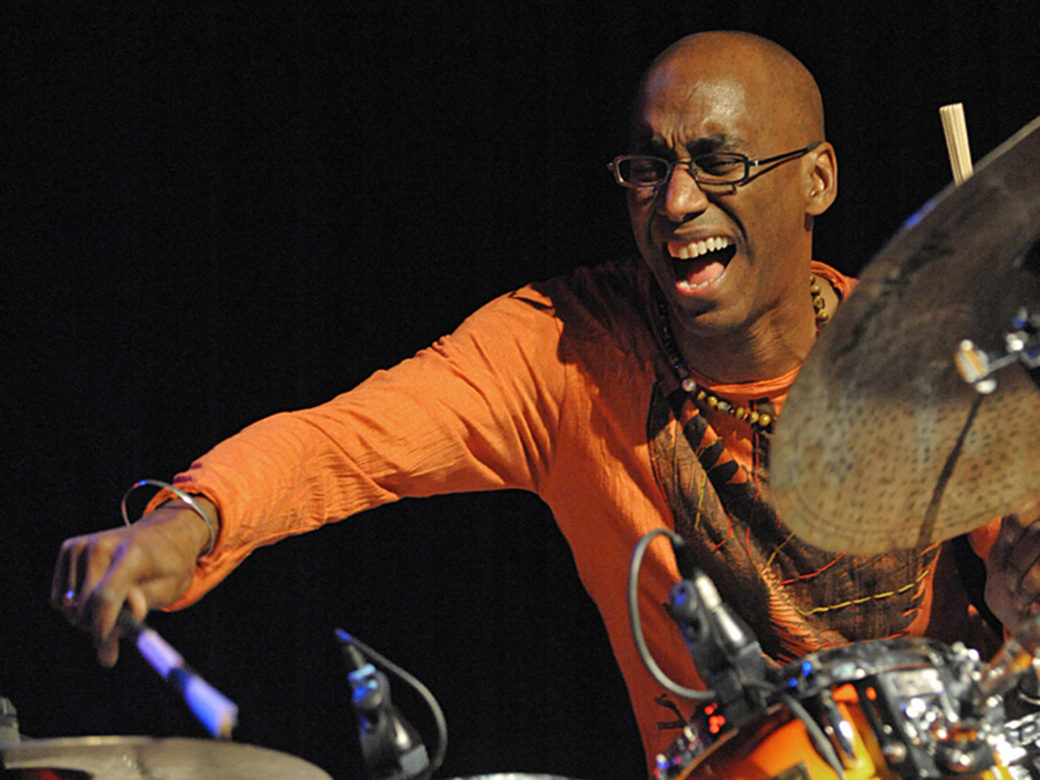
(photo by Rachel Z Hakim)
Omar joined Local 802 in 1977 and Rachel in 2000. Both have been active in the Jazz Mentors series of panel discussions, and Rachel is active on the Jazz Committee and the Coordinating Advisory Committee. They’ve collaborated on a clinic for the Council for Living Music, and Rachel has played for the Jazz Mentors Student Jam. Rachel is particularly focused on advocacy.
“When I was on the road with Wayne,” she told me, “I realized I was really making $5 an hour! Not great! And that had been my greatest goal in life – to play with Wayne Shorter. So, I knew I had to do something to leverage my money so that, you know, if this was going to be my life as a musician, I needed to do something. When I was in high school, I got paid $80 for a gig. And now one needs about $240 to buy what I could buy with $80 back in 1980! I know most gigs in New York aren’t paying that. I’m talking, for example, about a restaurant that might be making a lot of money. You know, most high-end restaurants will not pay $1,000 for a quartet. Maybe I’m naïve, but I don’t understand why they won’t and why they can’t! And I don’t understand how rents can go up exponentially, since I used to pay $650 when I first moved to New York, and now you couldn’t touch that same apartment for under $4,000. And yet the wage of a jazz musician hasn’t moved. They’ll still be like, ‘Here’s $80.’ In fact, they’ll pay you less! They’ll be like, actually, ‘Can you just play for this tip jar?’ or ‘We’re going to have ten bands in this club, and you guys can all each make $10!’ So, I really feel that we need to address wage inequity across the board when our city makes millions of dollars from music, billions even, from entertainment! And that’s why I just think we need to figure out how to tie in the vast wealth of the 1-percenters that live in New York – the millionaires, the billionaires who own property – and we need to create more spaces for the arts and create funding for artists. You know, we just cannot allow it to diminish any further. And musicians are like doctors! They spend a lot of money on degrees. You know, how many musicians over the next 20 years will seek a doctorate? Kids in their 20s are just staying in school to get their masters. That means they have six years of college debt – and that’s another area where we’re taking advantage of kids: a billionaire will borrow money at two percent. But they’ll charge a student ten percent for a smart loan to go to college. This disparity can’t continue. We need to create an expectation for musicians that they’re going to make $500 a night! Or you know, receive a minimum of $200 or $300 a night for several nights each month. Servers in restaurants make that much! And they should!
“Also, we need landlords involved in funding these things. We need to have an arts tax. The dearth of tax dollars set aside for artists and the lack of government funding are negatively impacting communities. A nice coffee shop, a music venue, a jazz café, and some artwork – all of those can really improve the look of a really poor neighborhood. An arts meeting space can create an entire community. Look at Montclair, New Jersey. It basically started that way. Rejuvenation! South Orange, New Jersey, and even in Denville, New Jersey, there are lot of art galleries; a lot of artists live there. People want to be in places like that! Plus, the revivals in NYC: Bed Stuy, Williamsburg, the East Village and SoHo – all were created more or less by artists, and then those same artists end up getting pushed out. That just becomes unfair and ultimately unhealthy for the community.”
Rachel and Omar, with artistic expression as their goal, found their lives woven together by a common interest in music, a commonality of purpose, and a shared sense of what it means to be in community. It was their mutual pursuit of a mode of self expression that inevitably drew them together.
Rachel put it this way: “I was over in New Jersey. Omar’s in Queens. We were both equidistant from the epicenter of Manhattan. As a kid, I got Weather Report’s ‘Procession’ LP, the first one Omar was on. I turn the record over, and it’s got the picture of Omar and Victor Bailey and Jose Rossi standing in a flight case. And I said to myself, ‘Oh my God! What’s an Omar Hakim? I have to know!’ I listened to the record, and I immediately fell in love with it. I had always told my mom, ‘I want to go to the School of Music and Art!’ And that’s where Omar went! And when I got to college, I played with Najee, and he’s from Queens, and he told me, ‘You need to know about Jamaica Funk and study Omar Hakim and Marcus Miller.’ And I said, ‘Wow, O.K.!’ So then again, later, I set off to try and find this Omar Hakim guy. But then, when eventually I met him, I would always hide from him, because I thought, ‘Oh, my God! That’s Omar!’ But, when we finally played together, I said, ‘This time I’m going to talk to him. I’ve played with all these cats, I can do it. I can talk to Omar!’ So, that’s what I did. And then we got married.”
